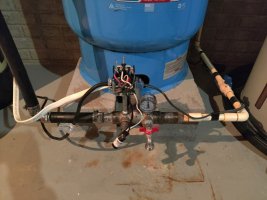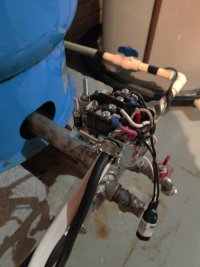dshuster
New Member
Hi everyone just joined up since this forum seems to come up in every well related search I perform and it always has great information.
I have a Grundfos 10SQ10-290 that was installed on 4/1/2024. The system includes a 40/60 pressure switch and an Amtrol WX205 pressure tank. I am experiencing an issue and hope someone can help explain how this works.
The cut-in pressure is set to 40 psi; I hear a click when the pump turns on. However, the cut-out pressure seems to be set at 44 psi because I hear a click there as well, but the pressure continues to rise to 60 psi on the gauge. When I try to set the cut-out pressure to 60 psi, the gauge eventually reads around 80 psi.
I tested my pressure tank after draining all the water and it is set at 38 psi which is correct for this configuration.
Any thoughts on why there’s a delay in the pressure increase after the cut-out pressure is reached?
Thanks
-Dimitry
I have a Grundfos 10SQ10-290 that was installed on 4/1/2024. The system includes a 40/60 pressure switch and an Amtrol WX205 pressure tank. I am experiencing an issue and hope someone can help explain how this works.
The cut-in pressure is set to 40 psi; I hear a click when the pump turns on. However, the cut-out pressure seems to be set at 44 psi because I hear a click there as well, but the pressure continues to rise to 60 psi on the gauge. When I try to set the cut-out pressure to 60 psi, the gauge eventually reads around 80 psi.
I tested my pressure tank after draining all the water and it is set at 38 psi which is correct for this configuration.
Any thoughts on why there’s a delay in the pressure increase after the cut-out pressure is reached?
Thanks
-Dimitry


